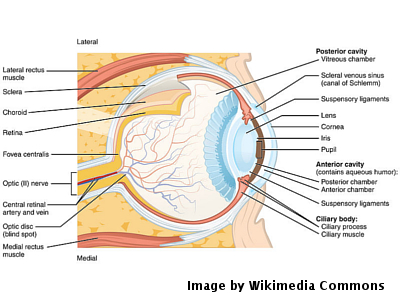Reproducible Research, Dynamic Documents, and Push-Button Publishing
 Researchers release a treasure trove of data on the developing retina, pushing the boundaries of neuroscience publishing by presenting it in an unprecedentedly dynamic and reproducible manner.
Researchers release a treasure trove of data on the developing retina, pushing the boundaries of neuroscience publishing by presenting it in an unprecedentedly dynamic and reproducible manner.
March 26, 2014, Hong Kong, China –The international open-access journal GigaScience (a BGI and BioMed Central journal) today announces a major step forward for reproducible research and public data-sharing in the neurosciences with the publication and release of a huge cache of electrophysiology data resources. Important for studying visual development, many groups have been using multi-electrode array recordings to look at developmental changes and the effects of various genetic defects on the spontaneous activity of the retina.
In neuroscience, public sharing of data is not routine, and to date there are not many publically available electrophysiology datasets. In this new study, researchers from Cambridge, Newcastle, York and Imperial College in the UK made available 366 recordings from 12 electrophysiology studies collected between 1993 and 2014, spending several months to read the data from different formats and convert and annotate them in a standardized and interoperable manner.
With growing concern over the inability to reproduce published research from bodies such as the US National Institutes of Health, this study also follows the still unusual step of encapsulating all of the data and software needed to write a paper in a format that can be easily shared. Following the reproducible research (RR) paradigm, this allows readers see and use the code that generated each figure and table and know exactly the results were calculated, adding confidence in the research output and allowing others to easily build upon previous work.
First author Dr Stephen Eglan from the University of Cambridge, UK, explains how this kind of work can encourage practices that enhance openness and reproducibility. “One way of encouraging neuroscientists to share their data is to provide some form of academic credit. Data papers in journals such as GigaScience are therefore one way forward.” Reviewing the study in an equally transparent and reproducible fashion, one of the referees of the study, Dr Thomas Wachtler from the Ludwig-Maximilians-Universität in Germany concurs, saying “the paper by Eglen and colleagues is a shining example for such openness in that it enables replicating the results essentially by pressing a button.”
Making the often-arduous peer-review process more straightforward, the referees were quickly able to exactly reproduce the results in the paper, and then even modify and adapt the figures in the paper. Another of the referees, Dr Christophe Pouzat from L'Université Paris Descartes, France, explained “in addition to making the presented research trustworthy, the reproducible research paradigm definitely makes the reviewer's job much more fun!”
The authors hope the data will serve both as an example for developing future standards, as well as being used to address new scientific questions. All of the 1GB of supporting data and code is available from the GigaScience database, as well as the CARMEN virtual laboratory.
References:
- Eglen, SJ; Weeks, M; Jessop, M; Simonotto, J; Jackson, T; Sernagor, E. A data repository and analysis framework for spontaneous neural activity recordings in developing retina. GigaScience 2014, 3:3 http://dx.doi.org/10.1186/2047-217X-3-3 [available from 26th March 2014]
- Pre-publication pre-print version http://biorxiv.org/content/early/2014/02/18/000455
- Eglen, SJ; Weeks, M; Jessop, M; Simonotto, J; Jackson, T; Sernagor, E. (2014): Supporting material for "A data repository and analysis framework for spontaneous neural activity recordings in developing retina". GigaScience Database. http://dx.doi.org/10.5524/100089
